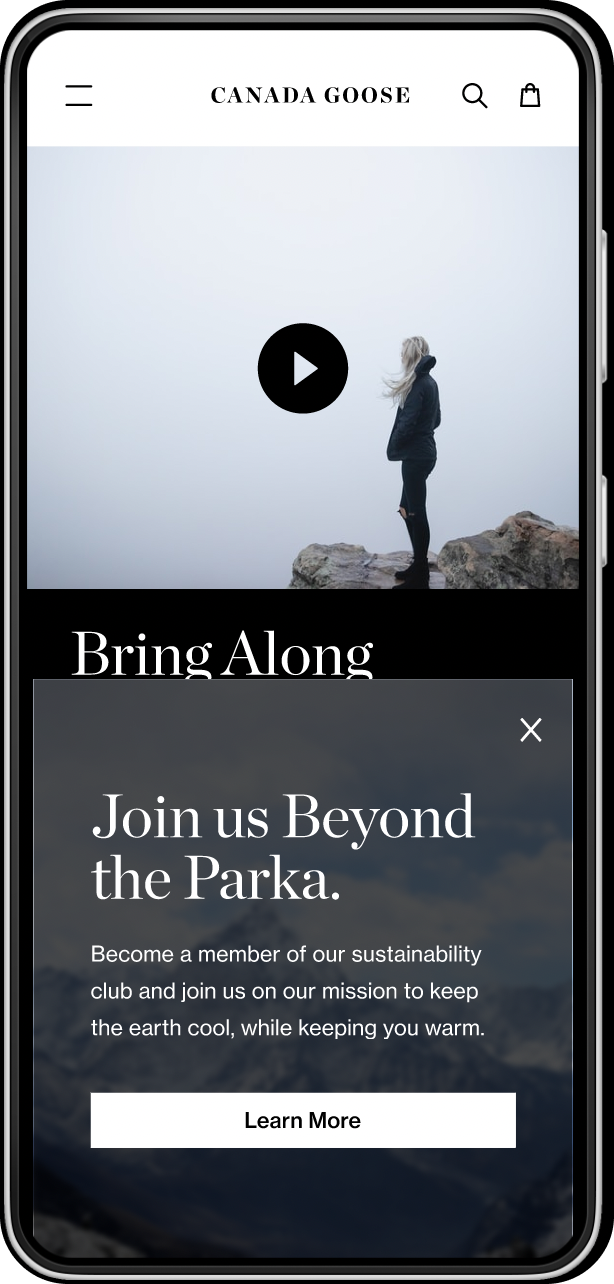
Basecamp Revamp
for
Canada Goose
by Julia Workman
Project Type: E-commerce brand experience design
Client: Canada Goose
Platform: Web
Year: 2022
My Roles: UX/UI Designer
Tools: Figma
| Team Members | |
|---|---|
| Julia Workman | UX Designer |
| Lisa Lo | UX Designer |
| Aryanna Farhadi | Web Developer |
| Ali Alhattab | Web Developer |
| Bruno Athayde e Silva | Data Scientist |
| Tanisha Batra | Data Scientist |
Prototype
QUESTION
How might we create a shopping experience focused on building customer loyalty as Canada Goose makes changes toward sustainability?
The Canada Goose digital division was searching for ways to improve the sales performance of their line of sustainably-produced outerwear products, called Humanature.
- Goal: Find ways to promote sustainable outerwear line that were congruent with the brand experience and helped cultivate customer loyalty.
- Impact: Enrollment in Basecamp had increased by 13%, and purchases from Humanature line had increased by 8% according to a check-in 9 months post-rollout.
We hypotehsized that their reputation for extravagance was out of sync with the values of their high-income, highly educated target demographic. These consumers increasingly value minimalism, and consider environmental impact in their purchasing behavior. (Source)
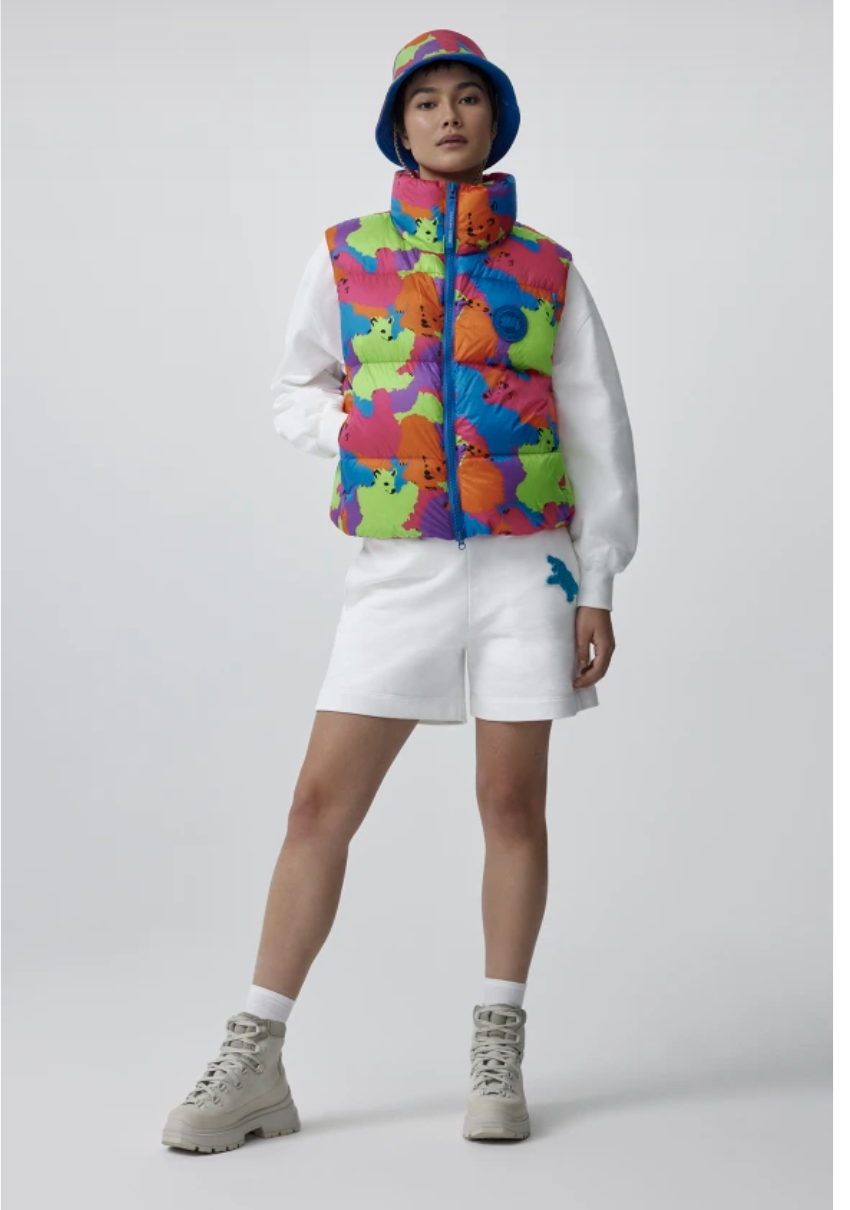
Canada Goose is a luxury brand, known for their brick-and-mortar retail stores which emulate the experience of an outdoor Arctic adventure.
METHODS
We analyzed social media follower profiles & aggregated customer data sets (qual & quant).
We combed the Canada Goose Instagram and Facebook channels for comments and interactions from their followers. We categorized the activity by post type and keywords. We also viewed the profiles of many of their followers and noted key demographic data, such as occupation, location, and known interests or hobbies.
Insights from the data science team suggested that the phrases "sustainable," "green," and "carbon footprint" only appeared in a positive context in 1.6% of customer statements.
DS also noted that while overall sales of the Humanature line were low, repeat customers were the most likely to purchase products from that line.
Lisa and I also interviewed 6 consumers in order to gain further insight into how the brand was perceived, and how loyalty could be cultivated.
Interviewees were between the ages of 25-40, earned at least $60k USD per year, had a current net worth of under $100k USD, and had made an outerwear purchase in the past year.
Research Insights
- Validation of existing assumption: Canada Goose outerwear is perceived as high-quality, durable, and warm.
- Validation of existing assumption: The brand is particularly coveted among the HENRY socioeconomic group (High Earners Not Rich Yet).
- Validation of existing assumption: HENRY Consumers are increasingly seeking out information about a brand's carbon footprint before purchasing their products.
- Validation of existing assumption: Canada Goose is not a brand that comes to mind when consumers are asked to name eco-conscious companies.
- Unexpected finding: Most consumers were aware of the controversy surrounding Canada Goose's use of animal materials in their outerwear.
Canada Goose's most loyal customers cared about sustainability, but Canada Goose did not have a reputation for it.
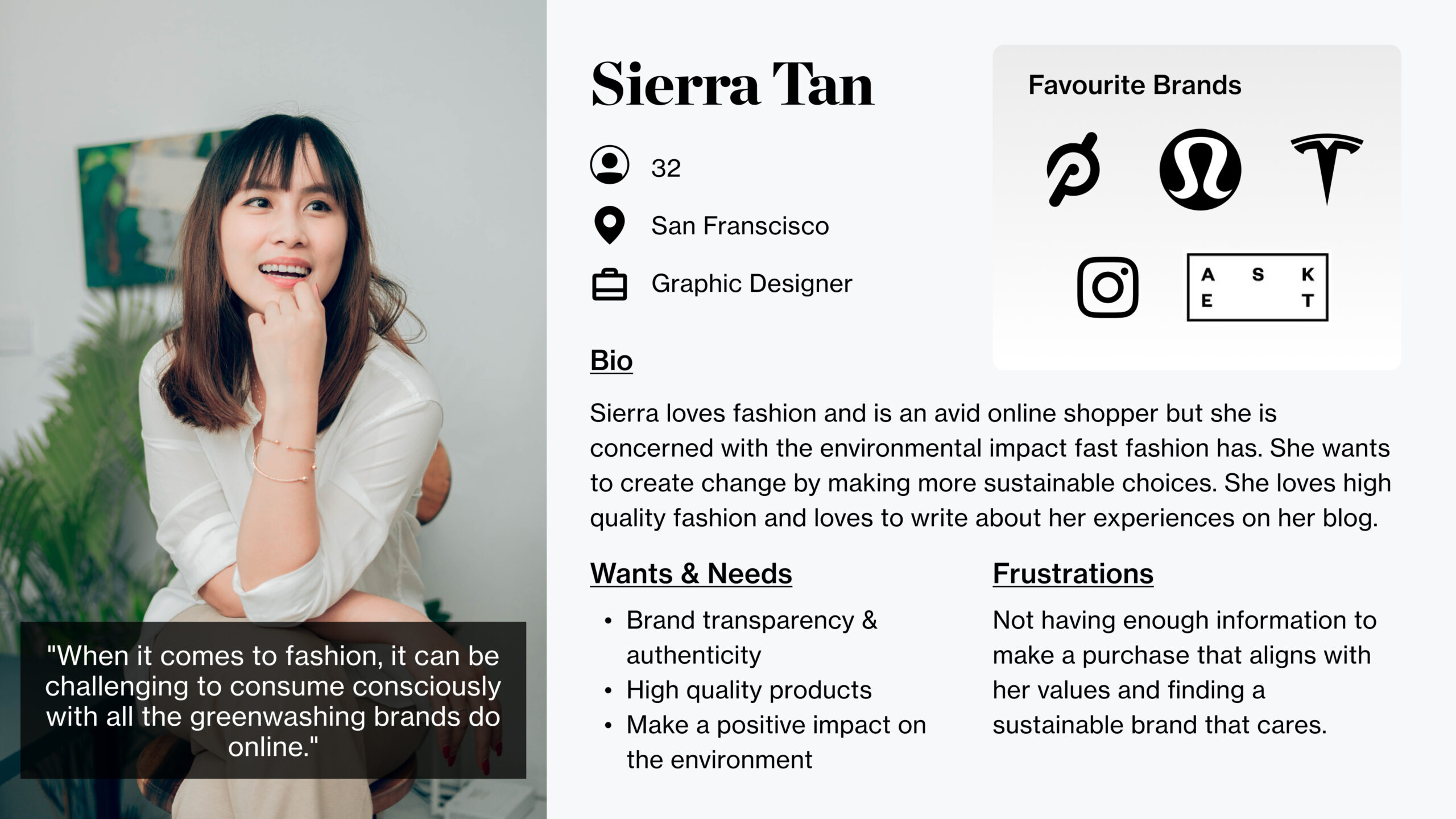
Our persona, Sierra, was useful for describing the customer journey to teammates who were unfamiliar with UX best practices.
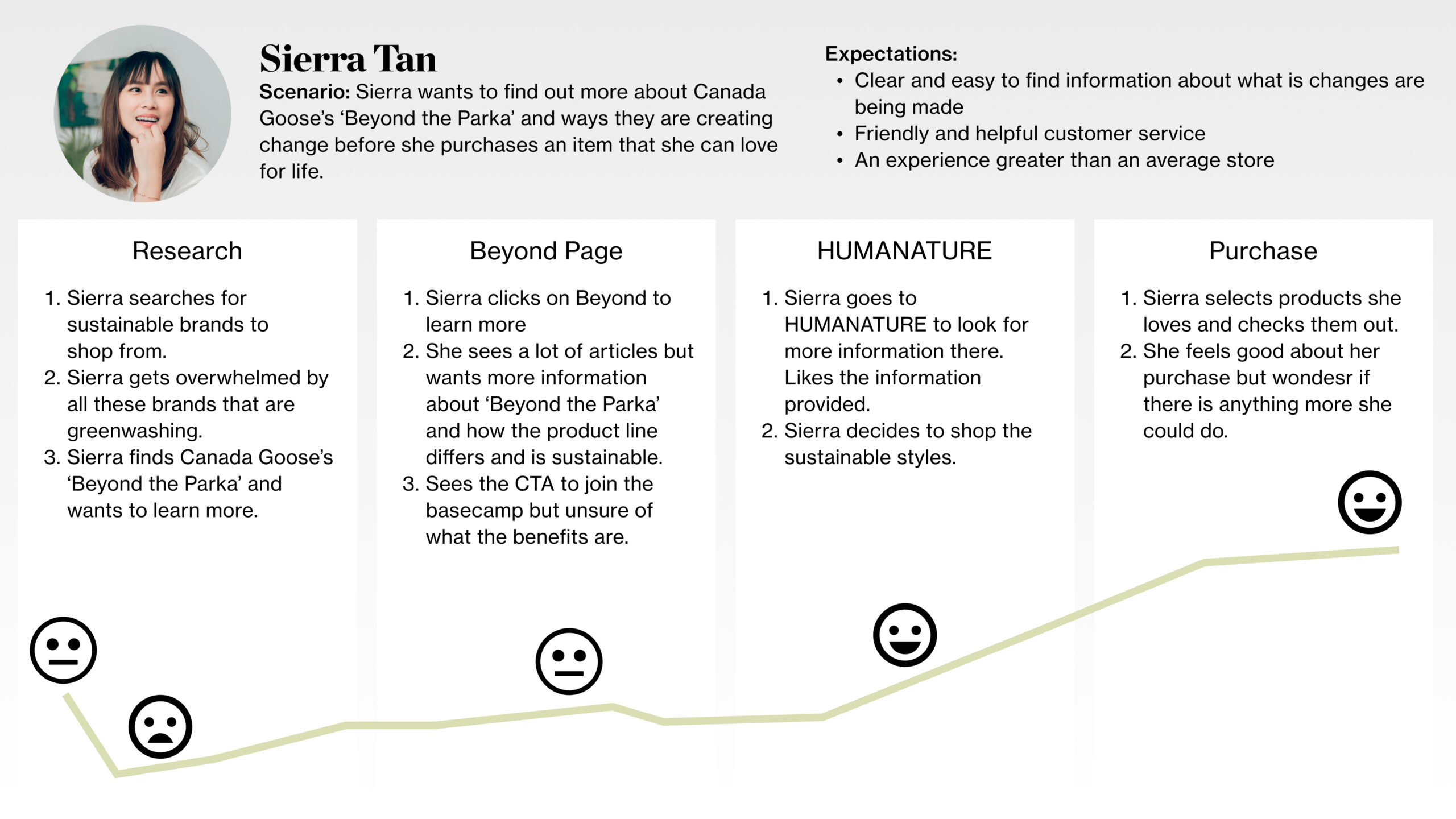
SYNTHESIS
Engage repeat customers in an emotionally impactful way. Center sustainability.
Our data showed that followers of Canada Goose's social media channels also engage with brands which have reputations for sustainable practices, such as Patagonia, the Reformation, and Nanushka.
These customers care about environmental sustainability, and they appreciate being assured that they're buying from brands following best practices.
Why? Because it makes them feel good about their purchasing habits.
Most people who value the natural world and its beauty feel a sense of responsibility toward protecting the planet. Human empathy, as well as social reward and pressure, factor into the concern over sustainability as well.
Canada Goose already had information about sustainability practices on their website, in the form of links to their PDF sustainability reports, and long text descriptions of the different types of sustainable fabrics they used in various garments.
While the website was technically informative, we know that text-heavy web pages do not provide an ideal user experience. According to a 2018 study by the Nielsen Norman Group, too much text decreases user engagment and increases bounce rate. Ali and Aryanna, our web developers, also told us that text-heavy pages can hinder SEO.
Lisa and I determined that Canada Goose had an opportunity to engage Sierra in a visual and emotional way regarding sustainability. Emotional connection with customers increases brand loyalty, customer retention, and positive word-of-mouth. It also enhances brand image and differentiation, leading to increased sales and profits.

COMPETITIVE ANALYSIS
How have other brands engaged their customers in the experience of buying eco-conscious goods?
Lisa and I looked at the websites of brands known for sustainably-produced clothing with an overlapping customer base: Patagonia, The Reformation, and Stella McCartney. The techniques we observed were:
- Visual communication of the impact their products have on the environment and how it benefits the planet.
- Building of a strong brand narrative and mission around sustainability and environmental responsibility.
- Showcasing transparency in their production process and supply chain to build trust with customers.
- Offering eco-friendly product alternatives that meet the needs and preferences of their customers.
- Creation of a sense of community around the brand by encouraging customer feedback, involvement in sustainability initiatives, and hosting events or campaigns.
- Highlighting the personal benefits of using sustainable products, such as health, cost savings, and social good.
SOLUTION
BEYOND PLUS Loyalty Perks Program by Canada Goose
(*Note: Later the decision was made to keep the name of Canada Goose's exisitng newsletter, Basecamp*)
A customer community focused on exclusive access, appealing to consumers' desire to do social good.
Canada Goose had an existing customer loyalty program called Basecamp. However, internal data showed a sign-up rate of less than 10%. Additionally, the program did not leverage any of CG's sustainability initiatives.
We already know that increased emotional engagement is crucial for brand loyalty, and that CG customers value quality.
Our loyalty program makeover had two requirements...
1. Use emotional engagement techniques, leveraging consumers' interest in sustainability, to pique interest in the program.
2. Offer high-value perks to community members. The assessment of value was based on data from our research about the priorities and preferences of HENRY consumers, who tend to place high value on experiences.
Program Features
- Travel rewards
Canada Goose will partner with airlines and other brands in the travel industry to provide education and assistance on sustainable traveling. - Exclusive access & collabs
Members get exclusive access to new collections, such as unique pieces designed in collaboration with other sustainable brands. There will also be invitation-only purchase opportunities. - Unique experiences
Canada Goose already offers a unique experience at their birck-and-mortar stores, the Beyond Plus program would carry this aspect of their brand into the digital realm.
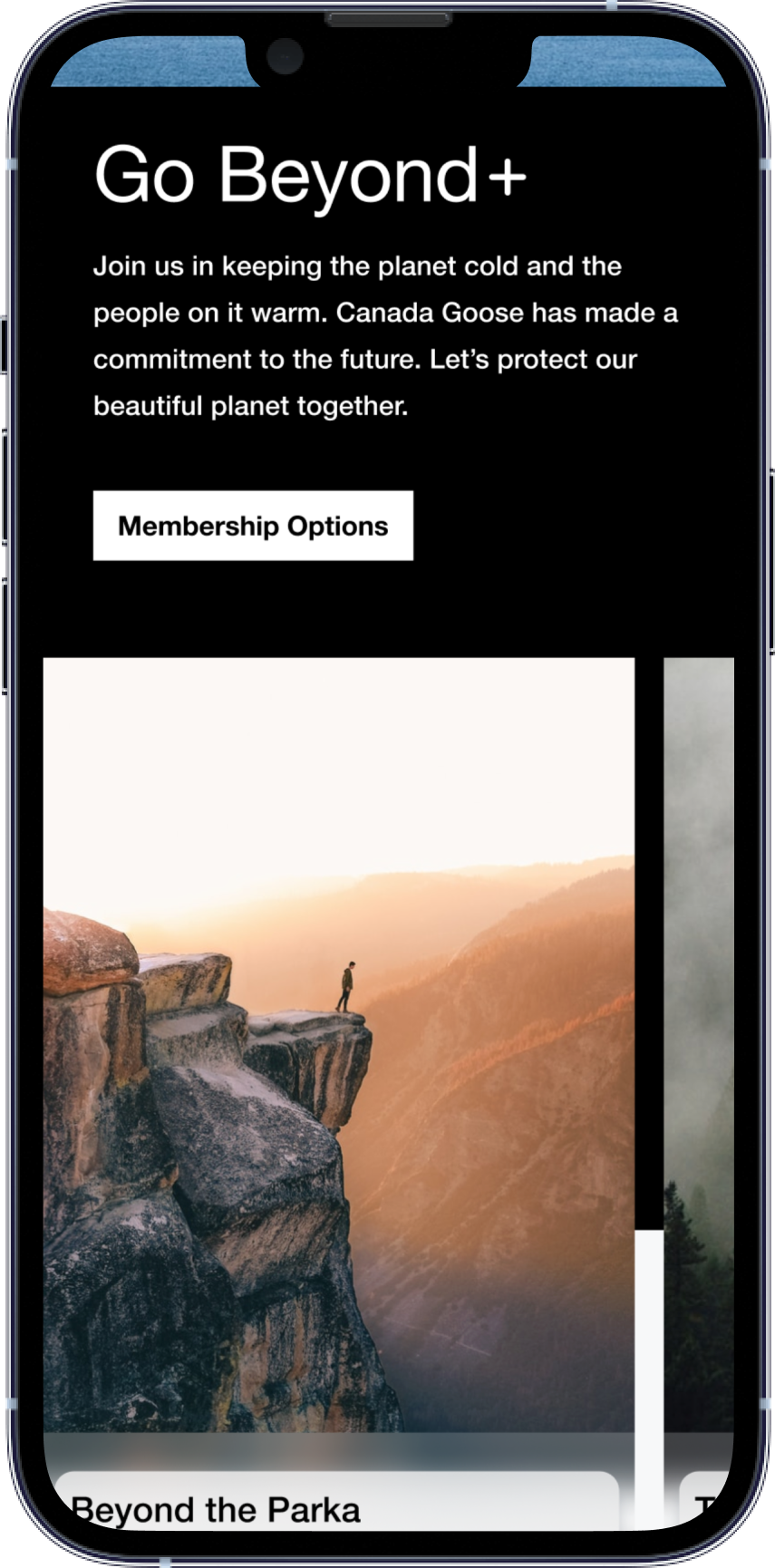
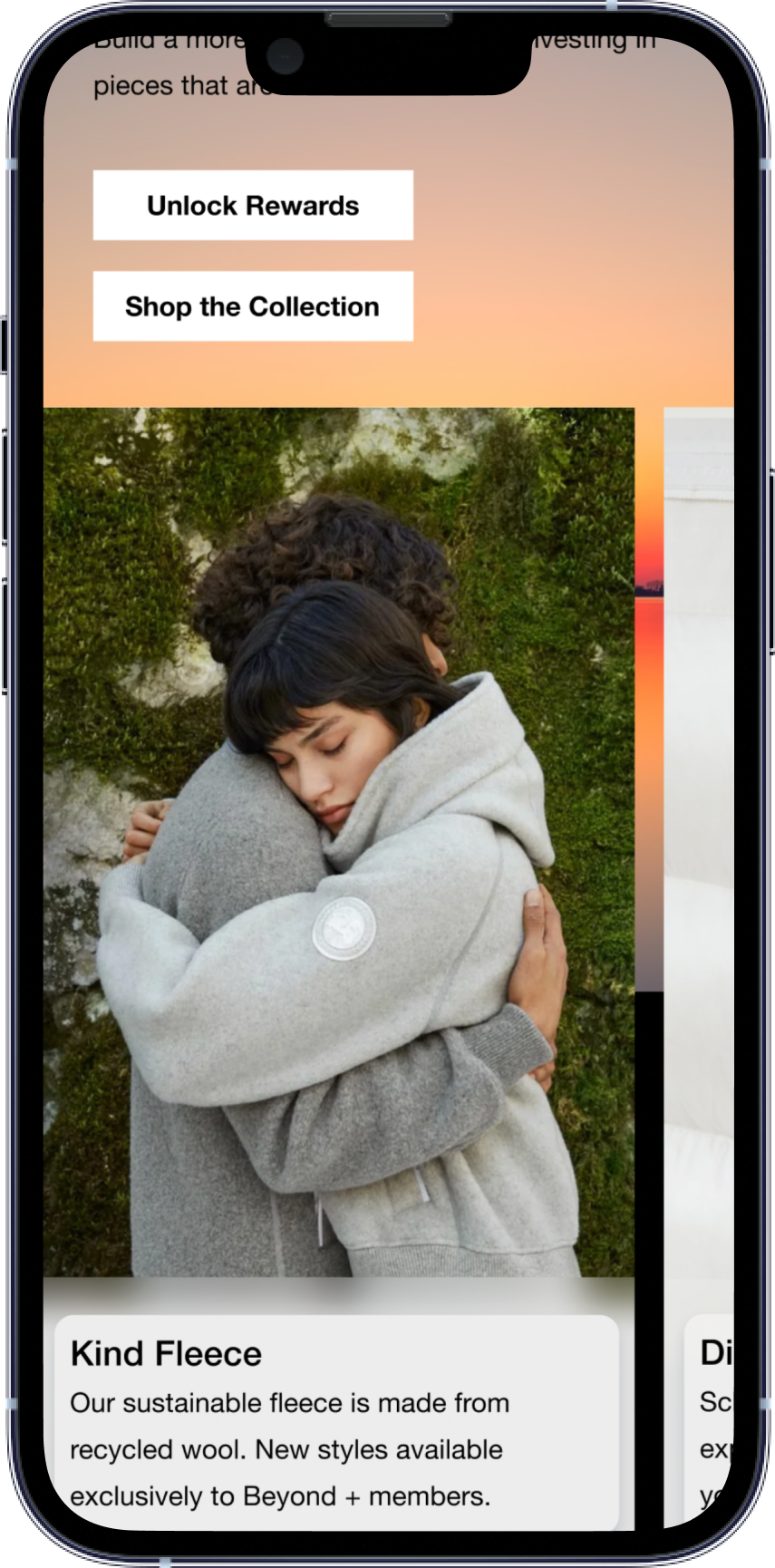
Thank You For Reading!
Design Projects

Applied Technical ServicesUX Research, UX Strategy
Julia Workman
Product Designer
Portland, ME, USA
workmanjulia@gmail.com
LinkedIn
© Julia Workman 2023
UX design portfolio
